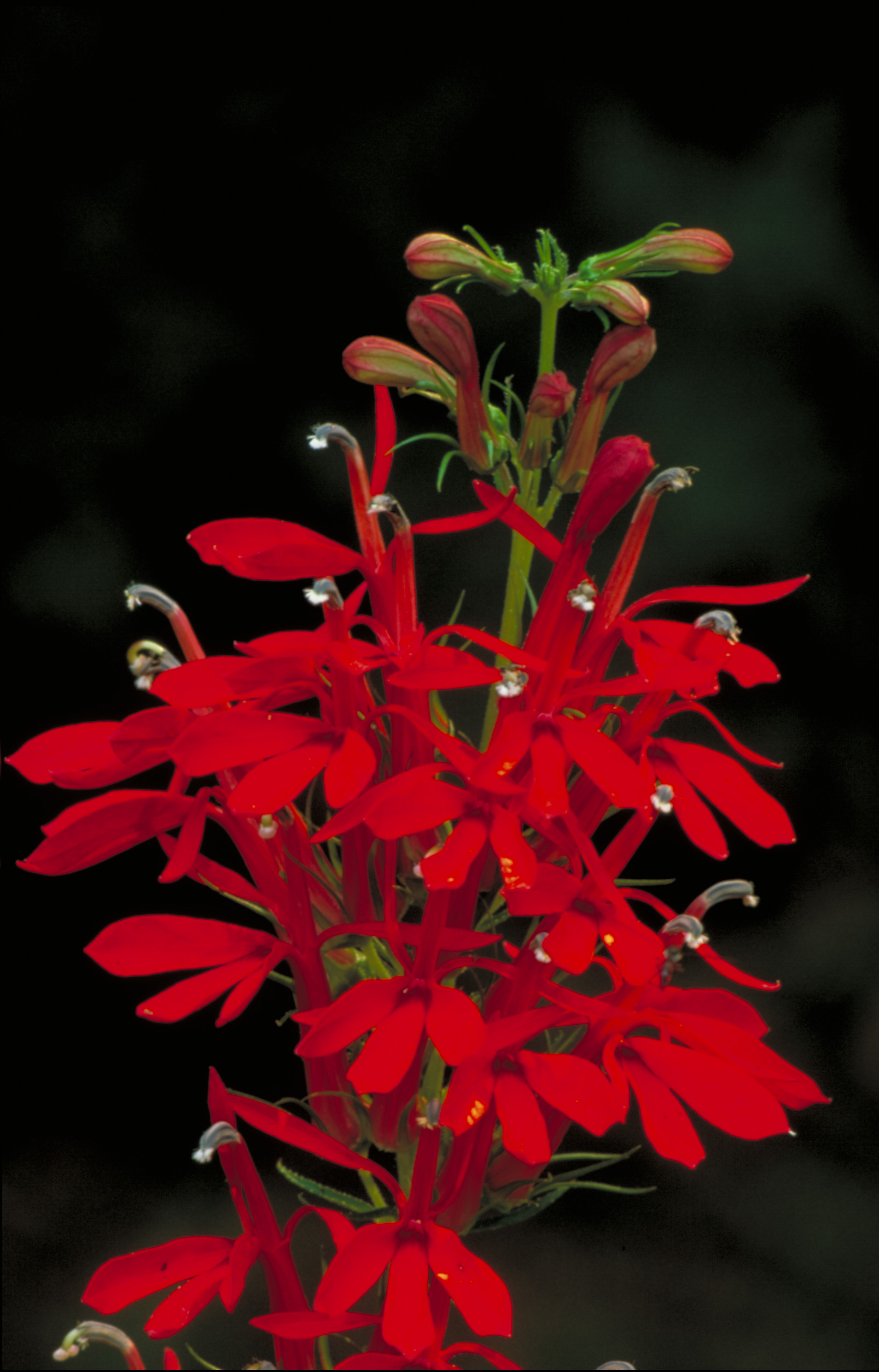
Lobelia cardinalis
University of Kentucky Professors John Littleton (Psychology), Greg Gerhardt (Anatomy and Neurobiology, Center for Microelectrode Technology, Morris K. Udall Parkinson's Disease Center of Excellence), and doctoral student Dustin Brown have written a scientific paper for publication entitled “Target-directed evolution of plant biosynthesis toward a specific pharmacological phenotype”.
According to LIttleton, "We expressed the human dopamine transporter (DAT) in plant cells and then selected a mutant population of these transgenic cells in MPP+, a DAergic neurotoxin that is accumulated intracellularly by the DAT. Transgenic mutants that over-produce inhibitors of the DAT should survive because MPP+ will not accumulate in them. Out of 109 MPP+-resistant mutants 58 show markedly increased DAT inhibition relative to wild-type. Many of these mutants contain metabolites which are not present in wild-type and which are active on the DAT. They are probably novel DAT inhibitors but we don’t know exactly what they are yet. Of the remaining 51 mutants that don’t overproduce DAT inhibitors many seem to be overproducing metabolites that inhibit the cytotoxic mechanism of MPP+ and many of these also protect DAergic neuronal cells also.
Its Darwinian evolution applied to plant drug discovery"
